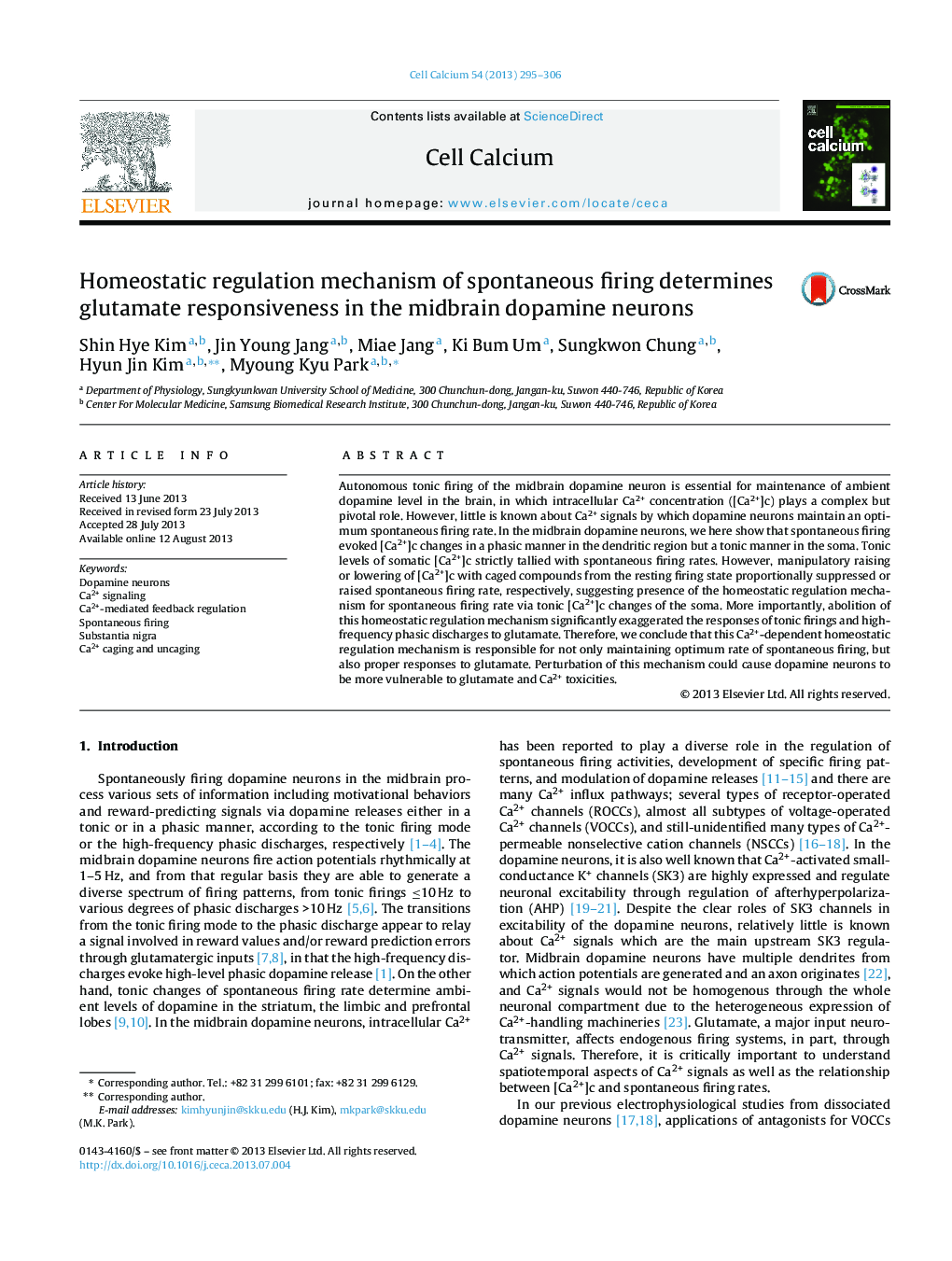| کد مقاله | کد نشریه | سال انتشار | مقاله انگلیسی | نسخه تمام متن |
|---|---|---|---|---|
| 2166064 | 1091810 | 2013 | 12 صفحه PDF | دانلود رایگان |

Autonomous tonic firing of the midbrain dopamine neuron is essential for maintenance of ambient dopamine level in the brain, in which intracellular Ca2+ concentration ([Ca2+]c) plays a complex but pivotal role. However, little is known about Ca2+ signals by which dopamine neurons maintain an optimum spontaneous firing rate. In the midbrain dopamine neurons, we here show that spontaneous firing evoked [Ca2+]c changes in a phasic manner in the dendritic region but a tonic manner in the soma. Tonic levels of somatic [Ca2+]c strictly tallied with spontaneous firing rates. However, manipulatory raising or lowering of [Ca2+]c with caged compounds from the resting firing state proportionally suppressed or raised spontaneous firing rate, respectively, suggesting presence of the homeostatic regulation mechanism for spontaneous firing rate via tonic [Ca2+]c changes of the soma. More importantly, abolition of this homeostatic regulation mechanism significantly exaggerated the responses of tonic firings and high-frequency phasic discharges to glutamate. Therefore, we conclude that this Ca2+-dependent homeostatic regulation mechanism is responsible for not only maintaining optimum rate of spontaneous firing, but also proper responses to glutamate. Perturbation of this mechanism could cause dopamine neurons to be more vulnerable to glutamate and Ca2+ toxicities.
Journal: Cell Calcium - Volume 54, Issue 4, October 2013, Pages 295–306